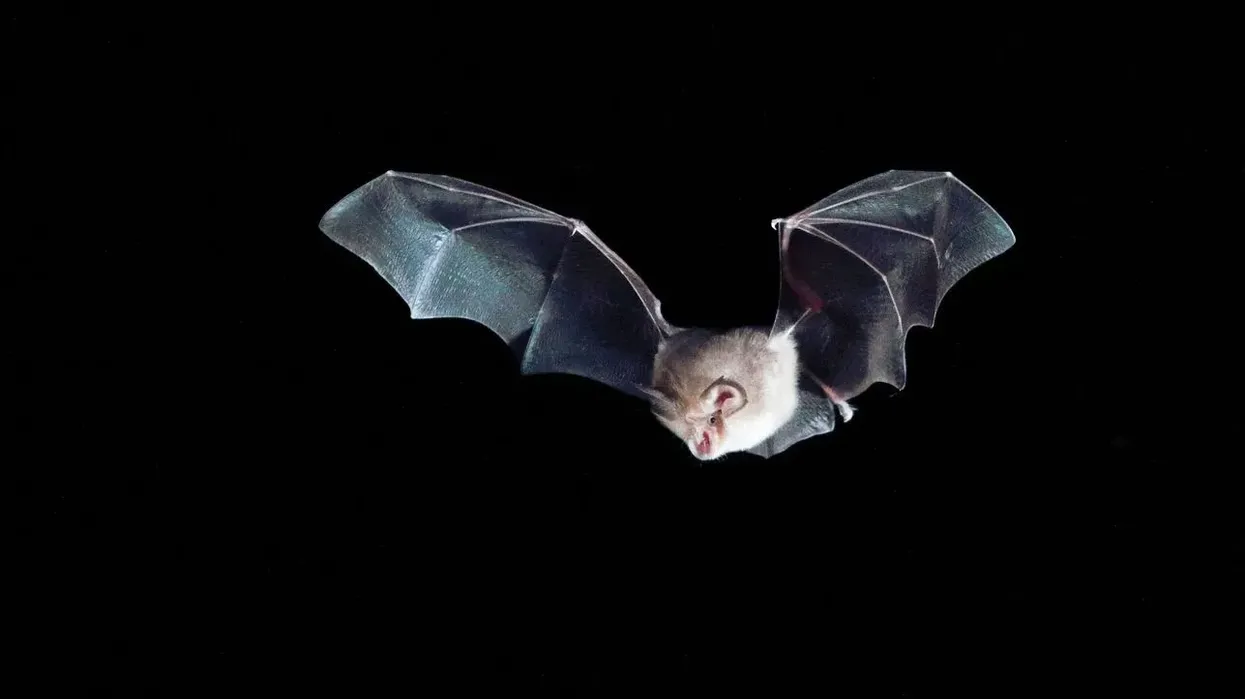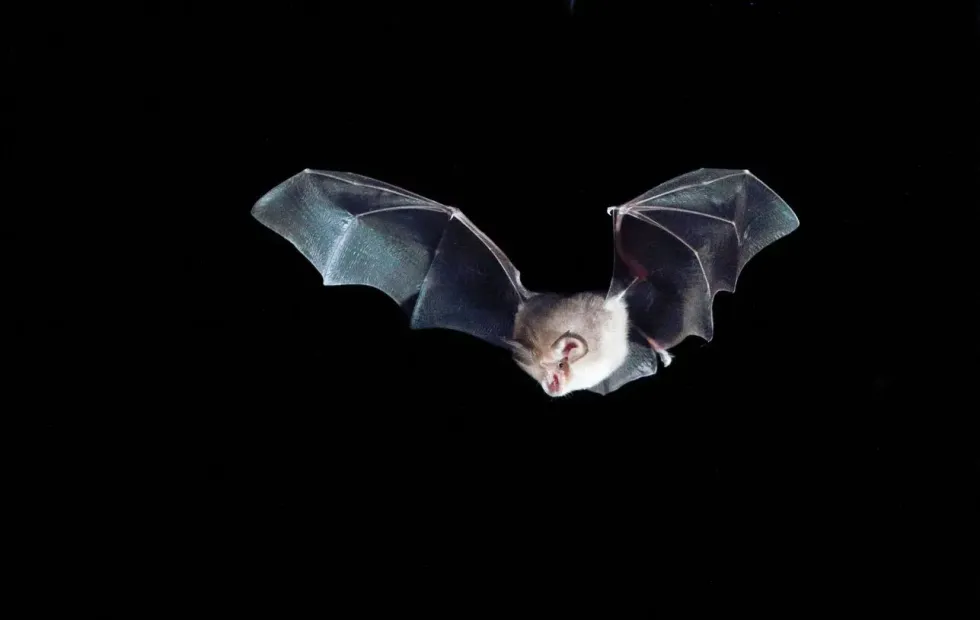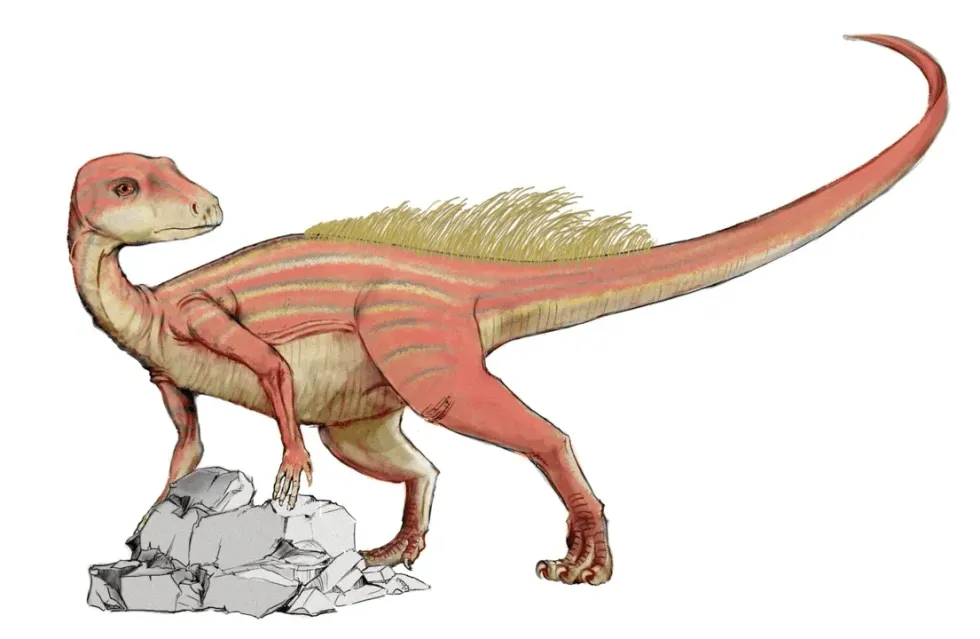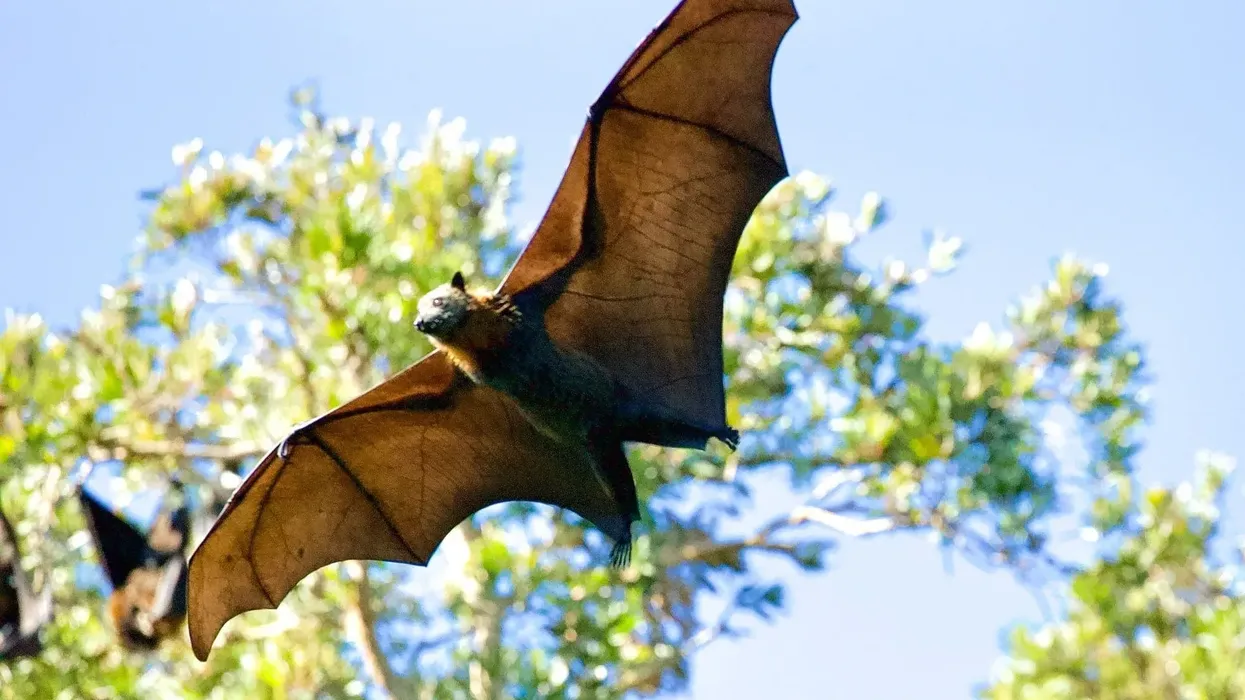There are a total of 1400 species of bats in the world. The Lesser horseshoe bat, Rhinolophus hipposideros, is often confused with the greater horseshoe bat, a cousin.
Lesser horseshoe bats reside in habitats including woodland edges, foothills, highlands, and caves and feed on small invertebrates like midges, caddisflies, beetles, wasps, and others. When they catch bigger prey they usually take them back to their perch/homes. They forage for most prey during the night and their movement is strategic.
They communicate using high-pitched calls that can be caught on a bat detector device. Summer and winter roosts of these species are usually less than 3.1-6.2 mi (5-10 km) apart.
The horseshoe bat population has decreased over the years and factors include habitat loss, agricultural pesticides, and other harmful practices. Horseshoes are considered to be one of the smallest species of bats and are seen mostly in the range of Europe.
This article will look at some fun and interesting facts about these unique species. If you like this article then visit our Rodrigues flying fox and gray fox articles too.
Lesser Horseshoe Bat Interesting Facts
What type of animal is a Lesser Horseshoe Bat?
The Lesser horseshoe bat is a type of bat animal that belongs to the kingdom Animalia and order Chiroptera.
What class of animal does a Lesser Horseshoe Bat belong to?
The Lesser horseshoe bat, Rhinolophus hipposideros, belongs to the Mammalia class of species, family Rhinolophidae, and genus Rhinolophus.
How many Lesser Horseshoe Bats are there in the world?
The Lesser horseshoe bats' population in the UK is about 15000 and 12,000 in Ireland. Their populations have increased steadily since 1999. They are seen primarily in caves at elevations of 1160 m above sea level. The lesser horseshoe bat distribution in the west is more as compared to other parts of Europe.
Where does a Lesser Horseshoe Bat live?
Lesser horseshoe bats live in woodland, wetland areas, and pastures. They are primarily found in western England, Wales, and Ireland.
What is a Lesser Horseshoe Bat's habitat?
Lesser horseshoe bat's habitat constitutes of old buildings, woodland regions, mines, houses, caves, trees, and pastures. The caves are usually in forests or near the woods and come out to prey on insects.
Who do Lesser Horseshoe Bats live with?
Lesser horseshoe bats live in warmer regions and are mostly solitary. They do occasionally gather in groups. These bats are rare species in Europe and the Middle East.
How long does a Lesser Horseshoe Bat live?
The Lesser horseshoe bat, Rhinolophus hipposideros, lives three years. The oldest bat in the world is Brandt's Myotis who lived 41 years in Siberia.
How do they reproduce?
Not much is known about the reproduction cycles of these bats. However, their breeding season is in the fall. Females form maternity colonies or nursery roosts. They give birth to a single pup in July or August. The young ones become independent at roughly a month to six weeks old.
What is their conservation status?
The lesser horseshoe bat, Rhinolophus hipposideros, is classified as a Least Concern species by the International Union For Conservation Of Nature (IUCN). There is a lesser horseshoe bat conservation handbook consisting of information related to these species of animals based on experience and studies.
Lesser Horseshoe Bat Fun Facts
What do Lesser Horseshoe Bats look like?
The Lesser horseshoe bat, Rhinolophus hipposideros, is one of the smallest species of bats in size. They have gray-brown fur, a pale underside, and a pink face.
They have folds of skin around their nostrils called a noseleaf, a prominent part of their identity. The Lesser horseshoe bat's wingspan is 7.5-9.8 in (19-25 cm). The Lesser horseshoe bat length is 1.4-1.8 in (3.5-4.5 cm).
The Lesser horseshoe bat brain shares a similar structure to other species of mammals and they are intelligent beings who have a good memory. They hang freely by their feet wrapping their wings around their bodies.
How cute are they?
They are cute beings however it's safe to keep a distance from bats as they are known to be transmitters of diseases.
How do they communicate?
The Lesser horseshoe bat, Rhinolophus hipposideros, flies mainly at night and produces a stream of high-pitched calls. They primarily communicate through vocalizations known as echolocation calls. This is even though their main function is not communication.
How big is a Lesser Horseshoe Bat?
The Lesser horseshoe bat, Rhinolophus hipposideros, is 1.37-1.77 in (3.5-4.5 cm) long which is 10 times bigger than the smallest bat species, Kitti's hog-nosed bat which is 1.1-1.3 in (29-33 mm).
How fast can a Lesser Horseshoe Bat fly?
The Lesser horseshoe bat, Rhinolophus hipposideros, can fly fast and remain agile. They are small species of bats and spot possible prey while in flight as well. The bat emerges from its day roost to forage after the sun has passed below.
How much does a Lesser Horseshoe Bat weigh?
The Lesser horseshoe bat weighs 0.011-0.019 lb (5-9 g). The largest and heaviest bat in the world is the giant golden-crowned flying fox.
What are the male and female names of the species?
Male and female bats are not addressed differently however they are differentiated based on their reproductive functions.
What would you call a baby Lesser Horseshoe Bat?
A baby Lesser Horseshoe bat is referred to as a pup when born and is blind at birth. The Lesser horseshoe bat is one of the smallest species as an adult and as a juvenile even smaller.
What do they eat?
The Lesser horseshoe bat, Rhinolophus hipposideros, feeds on moths, spiders, flies, and midges. They hunt close to the ground. In certain instances where they find possible prey, they go back to the perch to eat.
Are they dangerous?
Yes, Lesser horseshoe bats have the capability of transmitting diseases hence it's safer to not touch or be near them. If you do encounter a bat it's best to observe them from a distance. Bats do not intentionally harm humans.
There is limited data on symptoms associated with bat diseases. However, this does not eliminate the notion that bat species are capable of transmitting diseases. Having one bat in or near the house is perfectly normal, however, having multiple bats is a sign of infestation and needs treatment.
Would they make a good pet?
They are innately wild animals and prefer living in their natural habitat as compared to living as a pet. They are not as accommodating as other species of pet animals and are large, so adopting these species is not ideal.
Did you know...
An older English name for bat species was flittermouse. This matched their names in German and Swedish languages. The name was given or associated with the action of bats being animals who flutter their wings.
Bats can twist their bodies to observe their surroundings before flying.
The largest bat ever recorded is the golden-crowned flying fox which is a fruit-eating megabat found only in the Philippines. Its weight is 2.6 lb and its wingspan is 5-6 ft.
Bats have been subject to various scientific experimental efforts. Around 80% of medicine comes from plants that rely on bats for their survival. Studies are conducted on bats since they are considered carriers of disease. Although such rare species are left and more common species are chosen for experimentation.
Why is the Lesser Horseshoe Bat endangered?
The Lesser horseshoe bat is not endangered in all regions but in certain regions like Europe and the Middle East. This is primarily due to changes in habitat and other factors like the use of pesticides and agricultural practices among others.
Their population is decreasing. They are a priority on the UK biodiversity action plan that works closely to protect such animals. They are protected under the Wildlife And Countryside Protection Act 1981.
Why are they called Horseshoe Bats?
As discussed earlier, the greater horseshoe bats and lesser horseshoe bats are relatives. They derive their name from their large nose leaf which is shaped like a horseshoe if observed closely which helps them locate an echolocation call and other frequency calls as well.
Here's a fun fact to end, did you know that these species of bats are the only ones who can move their ears to help them locate possible prey?
Here at Kidadl, we have carefully created lots of interesting family-friendly animal facts for everyone to discover! Learn more about some other mammals from our hoary bat fun facts, and Mexican free-tailed bat facts pages.
You can even occupy yourself at home by coloring in one of our free printable Lesser horseshoe bat coloring pages.










